Donald Keene Center Visiting Fellows
(The program described below is currently on hiatus.)
In 2000, the Donald Keene Center of Japanese Culture established, with the financial support of the U.S.-Japan Foundation, a major new exchange program for distinguished visiting Japanese intellectuals at Columbia University. This program invites leading Japanese writers, scholars in the humanities and social sciences, journalists, and creative artists to spend a significant period of time at Columbia University each year. The principal objectives of this Donald Keene Center Visiting Fellows Program are as follows:
a) To foster regular exchanges of ideas and opinions between leading Japanese and American intellectuals;
b) To develop a major venue for leading Japanese scholars, writers, and intellectuals to make their views better known in the United States; younger individuals of great promise will also be invited to participate;
c) To introduce Columbia University faculty members, graduate students and undergraduates to leading Japanese scholars, writers, intellectuals, and artists, and provide them with first-hand access to current Japanese ideas and opinion on a broad variety of subjects;
d) To provide an opportunity for Visiting Fellows to travel to universities and other institutions of cultural or intellectual exchange throughout the United States.
This program was made possible by a grant from the United States-Japan Foundation. The U.S.-Japan Foundation, incorporated in 1980, was established to improve the understanding between Japan and the U.S. It is the only private independent American grantmaking foundation dedicated to the mutual interests of the American and Japanese people.
Participants in the Visiting Fellows Program:
Spring 2003
FUNABASHI Yoichi (Columnist & Chief Diplomatic Correspondent, The Asahi Shimbun)
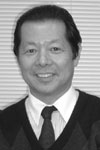 Yoichi Funabashi is a leading journalist in the field of Japanese foreign policy, currently serving as Columnist and Chief Diplomatic Correspondent at the Asahi Shimbun. He is also a contributing editor of Foreign Policy. Previously, he served as correspondent for the Asahi Shimbun in Beijing (1980-81) and Washington (1984-87), and as American General Bureau Chief (1993-97). In 1985, he received the Vaughn-Ueda Prize for his reporting on international affairs. He won the Japan Press Award, known as Japan's "Pulitzer Prize," in 1994 for his columns on foreign policy, and his articles in Foreign Affairs and Foreign Policy won the Ishibashi Tanzan Prize in 1992.
Yoichi Funabashi is a leading journalist in the field of Japanese foreign policy, currently serving as Columnist and Chief Diplomatic Correspondent at the Asahi Shimbun. He is also a contributing editor of Foreign Policy. Previously, he served as correspondent for the Asahi Shimbun in Beijing (1980-81) and Washington (1984-87), and as American General Bureau Chief (1993-97). In 1985, he received the Vaughn-Ueda Prize for his reporting on international affairs. He won the Japan Press Award, known as Japan's "Pulitzer Prize," in 1994 for his columns on foreign policy, and his articles in Foreign Affairs and Foreign Policy won the Ishibashi Tanzan Prize in 1992.
His books in English include Alliance Tomorrow, ed. (Tokyo Foundation, 2001); Alliance Adrift (Council on Foreign Relations Press, 1998, winner of the Shincho Arts and Sciences Award); Asia-Pacific Fusion: Japan's Role in APEC (Institute for International Economics, 1995, winner of the Mainichi Shimbun Asia Pacific Grand Prix Award); and Managing the Dollar: From the Plaza to the Louvre (1988 winner of the Yoshino Sakuzo Prize); and in Japanese, U.S.-Japan Economic Entanglement: The Inside Story (1987); and Neibu: Inside China (1983).
His recent articles and papers in English include: "International Perspectives on National Missile Defense: Tokyo's Temperance" (The Washington Quarterly, Summer 2000); "Japan's Moment of Truth" (Survival, Winter 2000-01); "Japan's Unfinished Success Story" (Japan Quarterly, 2001); "Asia's Digital Challenge" (Survival, Spring 2002); "Northeast Asia's Strategic Dilemmas" (Assessing the Threats, 2002); and "Learning from Five Years of Trialogue" (China-Japan-US: Meeting New Challenges, 2002).
He received his B.A. from the University of Tokyo in 1968 and his Ph.D. from Keio University in 1992. He was a Nieman Fellow at Harvard University (1975-76) and an Ushiba Fellow at the Institute for International Economics (1987).
During his Visiting Fellow stay in spring 2003, he gave numerous talks on topics ranging from North Korea to new trends in U.S. foreign policy to Japan's new course in the coming century. In addition to giving talks at Columbia, he lectured at Stanford University, the University of California-Los Angeles, the Pacific Council on International Policy (University of Southern California), Oberlin College, the Chicago Council on Foreign Relations, the Japan Society of New York, the Asia Society, the Japan Society of Boston, Harvard University, and Boston University. At Columbia, he gave a talk at the East Asian Institute; presented a lecture organized by Nihon Benkyokai, a student group at the School of International and Public Affairs; participated in a class on US-Japan relations in the postwar era; and was the featured speaker of a panel discussion on security issues in East Asia.
YOMOTA Inuhiko (Film Critic and Scholar)
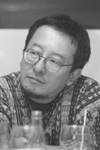 Mr. Yomota is currently Professor of Film Studies and Comparative Literature at Meiji Gakuin University, in addition to being a distinguished film and arts critic. He earned his M.A. in Comparative Literature from the University of Tokyo in 1979 and completed his Ph.D. course in 1982. He has been a Visiting Scholar at Columbia University (1987-88) and Bologna University (1994-95), as well as a Visiting Professor at Konguk University (1979) and Chung'an University (2000), both in Seoul. He has authored various publications on Japanese and Asian cinema, films in general, literature, and Asian studies, among other subjects. His recent publications include Radical Wills in Contemporary Japanese Cinema (1999), Japanese Cinema in an Asian Context (2000), Li Xianglan and East Asia (2001), and Korea My Love (2002). He has received numerous awards for his publications, including the Suntory Prize for Social Sciences and Humanities, the Inaugural Saito Ryoku Literature Award, Itoh Sei Literature Award, Kodansha Essay Award, and Japan Essayist Award.
Mr. Yomota is currently Professor of Film Studies and Comparative Literature at Meiji Gakuin University, in addition to being a distinguished film and arts critic. He earned his M.A. in Comparative Literature from the University of Tokyo in 1979 and completed his Ph.D. course in 1982. He has been a Visiting Scholar at Columbia University (1987-88) and Bologna University (1994-95), as well as a Visiting Professor at Konguk University (1979) and Chung'an University (2000), both in Seoul. He has authored various publications on Japanese and Asian cinema, films in general, literature, and Asian studies, among other subjects. His recent publications include Radical Wills in Contemporary Japanese Cinema (1999), Japanese Cinema in an Asian Context (2000), Li Xianglan and East Asia (2001), and Korea My Love (2002). He has received numerous awards for his publications, including the Suntory Prize for Social Sciences and Humanities, the Inaugural Saito Ryoku Literature Award, Itoh Sei Literature Award, Kodansha Essay Award, and Japan Essayist Award.
During his stay at Columbia in April 2003, Professor Yomota gave a talk on the theme of voluntary blindness in Asian film with a particular emphasis on Japanese melodramas. He then gave a presentation on "Chushingura as a Japanese Film Genre" at a symposium that explored various aspects of the Chushingura legend as represented in theater, history, and film. Professor Yomota also interacted with fellow scholars at the Annual Meeting of the Association for Asian Studies.
Fall 2002
MANABE Shunsho (President and Professor of Esoteric Buddhist Art, Hosen Gakuen College)
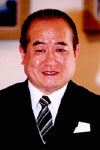 Professor Manabe is an eminent specialist on Esoteric Buddhism in China and Japan, a painter of Buddhist art, an accredited restorer of Japanese art treasures, and a renowned curator of exhibitions, in addition to being a Shingon Buddhist priest. He received his M.A. in Indology and Buddhist History from Tohoku University and his Ph.D. in Literature from Toyo University. He currently is President of Hosen Gakuen College as well as Professor of Esoteric Buddhist Art. He was Director of the Kanagawa Prefectural Kanazawa Bunko Museum from 1997 to 2000 after consecutively serving as Head Curator and Vice Director. In addition, he was Adjunct Lecturer in Chinese Art History at Toyama University from 1994 to 1995, Adjunct Lecturer in Western Art History at Seishin Women's College from 1993 to 1994, and Adjunct Lecturer in Japanese Art History at Tokai University from 1983 to 1992.
Professor Manabe is an eminent specialist on Esoteric Buddhism in China and Japan, a painter of Buddhist art, an accredited restorer of Japanese art treasures, and a renowned curator of exhibitions, in addition to being a Shingon Buddhist priest. He received his M.A. in Indology and Buddhist History from Tohoku University and his Ph.D. in Literature from Toyo University. He currently is President of Hosen Gakuen College as well as Professor of Esoteric Buddhist Art. He was Director of the Kanagawa Prefectural Kanazawa Bunko Museum from 1997 to 2000 after consecutively serving as Head Curator and Vice Director. In addition, he was Adjunct Lecturer in Chinese Art History at Toyama University from 1994 to 1995, Adjunct Lecturer in Western Art History at Seishin Women's College from 1993 to 1994, and Adjunct Lecturer in Japanese Art History at Tokai University from 1983 to 1992.
Professor Manabe has published numerous academic papers and books on topics including Esoteric Buddhist art, mandalas, and Tibetan art. His publications include Kobo daishi gyojo ekotoba; Mandala no sekai; Tanka Chibetto, Neparu no butsuga; and Mikkyo zuten. He has appeared on NHK TV as a lecturer on Tibetan Buddhist art.
As a Visiting Fellow during fall 2002, he taught a graduate seminar on the history of Japanese Buddhist art at Columbia, which was attended by students in religion, art history, and history. He also traveled to numerous universities to give lectures on Japanese Esoteric Buddhism and mandala art, including Stanford University, the University of Washington, Harvard University, Yale University, and Princeton University. At Columbia, in addition to teaching and lecturing, Professor Manabe presented a paper at an international symposium on the study of Shinto across various interdisciplinary fields. He also co-organized a workshop with other Columbia faculty on Buddhist literature, emaki, and other forms of art that emerged in Japan from Buddhist influences from the Heian and Kamakura periods. The participants included scholars from Columbia and other institutions such as the Metropolitan Museum of Art.
TAKAHASHI Genichiro (Author and Critic)
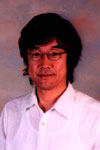 Genichiro Takahashi is one of Japan's leading postmodern writers. He has published numerous novels, short stories, and essays over the past two decades. His first novel, Sayonara, Gyangutachi Sayonara, Gangsters, 1982), won the Gunzo Literary Award for First Novels. In addition, his Yuga de kansho-teki na Nippon-yakyuu (Japanese Baseball: Elegant and Sentimental) won the Mishima Yukio Award in 1988, and his Nihon bungaku seisui shi recently received the Itoh Sei Literature Award. His other works include Penguin mura ni hi wa ochite (Sunset in Penguin Village, 1989), Wakusei P-13 no himitsu (The Secret of Planet 13, 1990), and Gosutobasutazu (Ghostbusters, 1997). His essays cover topics from books to horse-racing.
Genichiro Takahashi is one of Japan's leading postmodern writers. He has published numerous novels, short stories, and essays over the past two decades. His first novel, Sayonara, Gyangutachi Sayonara, Gangsters, 1982), won the Gunzo Literary Award for First Novels. In addition, his Yuga de kansho-teki na Nippon-yakyuu (Japanese Baseball: Elegant and Sentimental) won the Mishima Yukio Award in 1988, and his Nihon bungaku seisui shi recently received the Itoh Sei Literature Award. His other works include Penguin mura ni hi wa ochite (Sunset in Penguin Village, 1989), Wakusei P-13 no himitsu (The Secret of Planet 13, 1990), and Gosutobasutazu (Ghostbusters, 1997). His essays cover topics from books to horse-racing.
During his month-long Visiting Fellow stay, Mr. Takahashi participated in a class on modern Japanese literature at Columbia and also gave a public lecture in which he read from his first published novel, Sayonara, Gyangutachi, and shared his insights on Japanese literature from the turn of the 20th century to the present. His other lecture sites included Cornell University, Harvard University, Princeton University, New York University, and the University of California-Los Angeles.
Spring 2002
SUZUKI Tadashi (Theater Director)
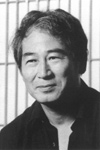 Tadashi Suzuki is the Founder and Director of the Suzuki Company of Toga (SCOT), Chairman of the Japan Performing Arts Foundation (JPAF), Artistic Director of the Shizuoka Performing Arts Center (SPAC), and the creator of the Suzuki Method of Actor Training. He organized the Toga Festival (Japan's first international theater festival) from 1982 through 1999 and formed the International Committee of the Theatre Olympics in 1993 together with Robert Wilson, Yuri Lyubimov, Heiner Müller, Wole Soyinka, and other theater artists from around the world.
Tadashi Suzuki is the Founder and Director of the Suzuki Company of Toga (SCOT), Chairman of the Japan Performing Arts Foundation (JPAF), Artistic Director of the Shizuoka Performing Arts Center (SPAC), and the creator of the Suzuki Method of Actor Training. He organized the Toga Festival (Japan's first international theater festival) from 1982 through 1999 and formed the International Committee of the Theatre Olympics in 1993 together with Robert Wilson, Yuri Lyubimov, Heiner Müller, Wole Soyinka, and other theater artists from around the world.
His works include "On the Dramatic Passions," "The Trojan Women," "Cyrano de Bergerac" and the opera "Vision of Lear." Through the Toga Festival and the 2nd Theatre Olympics in Shizuoka, Suzuki has introduced a wide range of the world's foremost theater artists to Japanese audiences.
Not only one of the world's leading theater directors, Suzuki is also an important performance theorist. The Suzuki Method is a system of exercises designed to be a realization of his philosophy, the cornerstone of which is a belief that human beings possess the ability to tap into the expressive power of "animal energy," and that theater, as a context for this expression, is socially and spiritually crucial in today's global world. Suzuki has articulated his theories in a number of books. A collection of his writings in English, The Way of Acting, is published by the Theatre Communications Group.
Suzuki's concerns include the structure of the theater group, the creation and use of theatrical space, and the overcoming of cultural and national barriers in the interest of creating work with a universal basis. He has been engaged in a long-term collaborative relationship with celebrated architect Arata Isozaki, working with him very closely in the creation of eight theaters in Japan. The result is buildings that not only combine the theatrical arts with architecture, but also reach a level of independence as highly acclaimed modern art forms.
Suzuki's activities reflect a forceful approach to dealing with many of the fundamental issues of our times, both in his role as a director creating multilingual and multicultural productions and as a festival producer bringing people from throughout the world together in the context of shared theatrical endeavors.
Suzuki has been described by U.S. theater critics as a "master of theater" (Boston Globe), "a surprising artist, full of daring schemes and disturbing notions" (Christian Science Monitor), and "an innovator" (Village Voice) who blends Noh and Kabuki traditions with modern and Western elements "with complete coherence, and thrillingly" (Financial Times).
During his two-week stay as a Visiting Fellow of the Donald Keene Center in April-May 2002, Mr. Suzuki conducted a variety of activities, including lectures, Q&A sessions, and technical demonstrations, at Columbia University, New York University, Yale University, and the University of Connecticut. At Columbia, he gave the Sen Lecture ("Tradition and Creative Power in Theater") and engaged in a Q&A session for theater students and other individuals interested in theater. He also was the focal point of a panel discussion on cross-cultural influences in theater with such distinguished theater professionals as New York Times drama critic Mel Gussow, set designer Ming Cho Lee, and Theatre Communications Group Executive Director Ben Cameron.
Fall 2001
KOMINE Kazuaki (Professor of Literature)
 Komine Kazuaki, a professor in the Department of Literature at Rikkyo University, is a world-renowned scholar in the field of setsuwa (folk) literature in Japan, working from the ancient period through early modern. Professor Komine received his B.A., M.A., M. Phil., and Ph.D. in Literature from Waseda University, and has taught at Rikkyo University since 1985. He has also taught at the National Institute of Japanese Literature (1981-1985) and in the School of Liberal Arts at Tokushima University (1979-1984). He is the author of numerous publications, including: Setsuwa no koe (The Voices of Setsuwa), Shinyo-sha, 2000; Uji shûi monogatari no hyôgen jikû(The Expressive Space-Time of Tales Gleaned in Uji), Chûsei bungaku kenky û soshô 10 Medieval Literature Research Library, vol. 10), Wakakusa Shobô, 1999; Chûsei setsuwa no sekai o yomu (Reading the World of Medieval Setsuwa), Iwanami Shoten, 1998; and Setsuwa no mori (The Forest of Setsuwa Literature), Taishû-kan Shoten, 1991. Professor Komine's awards include the Waseda University Literature Association Kubota Utsubo Prize (1981) and the Japan Premodern Literature Association Prize (1982).
Komine Kazuaki, a professor in the Department of Literature at Rikkyo University, is a world-renowned scholar in the field of setsuwa (folk) literature in Japan, working from the ancient period through early modern. Professor Komine received his B.A., M.A., M. Phil., and Ph.D. in Literature from Waseda University, and has taught at Rikkyo University since 1985. He has also taught at the National Institute of Japanese Literature (1981-1985) and in the School of Liberal Arts at Tokushima University (1979-1984). He is the author of numerous publications, including: Setsuwa no koe (The Voices of Setsuwa), Shinyo-sha, 2000; Uji shûi monogatari no hyôgen jikû(The Expressive Space-Time of Tales Gleaned in Uji), Chûsei bungaku kenky û soshô 10 Medieval Literature Research Library, vol. 10), Wakakusa Shobô, 1999; Chûsei setsuwa no sekai o yomu (Reading the World of Medieval Setsuwa), Iwanami Shoten, 1998; and Setsuwa no mori (The Forest of Setsuwa Literature), Taishû-kan Shoten, 1991. Professor Komine's awards include the Waseda University Literature Association Kubota Utsubo Prize (1981) and the Japan Premodern Literature Association Prize (1982).
During his stay as a Visiting Fellow of the Donald Keene Center (September to October 2001), Professor Komine conducted a series of four workshops at Columbia University. The workshops were attended by graduate students and scholars working in the fields of history, religion, art history, and literature at Columbia and other New York institutions. One of the highlights of this series was the final workshop held on October 18, 2001, which was open to the general public. The event was entitled Setsuwa (Folk Literature) and Media, and was co-sponsored by the Donald Keene Center of Japanese Culture, the Institute for Medieval Japanese Studies and the Department of East Asian Languages and Cultures at Columbia. The workshop took a fresh look, from a setsuwa-oriented perspective, at emaki (picture scrolls) as a medium. Beginning with gajûshi, the words written in emaki, Professor Komine analyzed the negotiations and interrelationships between emaki and setsuwa. He examined such emaki texts as Choju giga (Scrolls of Frolicking Animals) and Jûnirui emaki (Scrolls of the Twelve Animals) from a variety of perspectives. In this hands-on workshop, participants also viewed and handled scrolls and other significant pieces from the rare books collection of Columbia University's C.V. Starr East Asian Library.
As part of the Visiting Fellows Program, Professor Komine also presented various lectures and workshops at Indiana University, Yale University, Princeton University, and Cornell University. In addition, his stay in the U.S. allowed him to participate in a three-day manuscript survey at the Library of Congress. Professor Komine pursued his research at Yale University's rare book library and at the New York Public Library's Spencer Collection, and made major finds at both locations. At Yale he came across a Taketori monogatari ehon that had not previously been identified, and at the Spencer Collection he found a hitherto unknown variant on the Junirui emaki, which provided a major missing link on the study of this scroll.
Spring 2001
KORE-EDA Hirokazu (Film Director)
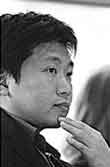 One of Japan's most promising young film directors, Mr. Kore-eda came to international attention in 1995 when Maboroshi, his first narrative feature film, was screened at the Venice Film Festival and awarded the Ozella D'oro. The film was shown at more than twenty film festivals and won numerous awards. His second narrative feature, After Life (1998) also received wide acclaim. Mr. Kore-eda recently completed his third film, Distance, a featured entry at this year's Cannes Film Festival.
One of Japan's most promising young film directors, Mr. Kore-eda came to international attention in 1995 when Maboroshi, his first narrative feature film, was screened at the Venice Film Festival and awarded the Ozella D'oro. The film was shown at more than twenty film festivals and won numerous awards. His second narrative feature, After Life (1998) also received wide acclaim. Mr. Kore-eda recently completed his third film, Distance, a featured entry at this year's Cannes Film Festival.
Born in 1962, Mr. Kore-eda received his B.A. degree in Literature from Waseda University in 1987, and then joined TV Man Union Inc., a television production company in Tokyo. Prior to his narrative debut, Kore-eda directed and produced award-winning documentary films for Japanese television (on subjects such as an H.I.V. patient; a Korean trying to "pass" in Japanese society; and the Taiwanese filmmakers Hou Hsiao-hsien and Edward Yang).
Mr. Kore-eda came to New York as a Visiting Fellow in April 2001. During his short stay, Mr. Kore-eda participated in a Directors' Panel Discussion that was the highlight of the eight-week "Countries and Cities in East Asian Film" series at Columbia University's Roone Arledge Cinema. The film series incorporated films from Japan (including Maboroshi and After Life), Korea and Taiwan, and was co-sponsored by the Donald Keene Center, the Richard W. Weatherhead Fund of the East Asian Institute, the Department of East Asian Languages and Cultures, the Film Division of the School of the Arts, and the Chiang Ching-Kuo Foundation Center for Chinese Cultural and Institutional History. The other participants in the Panel Discussion were Hou Hsiao-hsien (Taiwanese Director of City of Sadness and Dust in the Wind, and Mr. Kore-eda's mentor), Linda Hoagland (Japanese Film Specialist and Interpreter for Mr. Kore-eda), Chu T'ien-wen (Screenwriter), Peggy Chiao (Taiwan Film Center), Paul Anderer (Japanese Literature and Film, Columbia University), and David D. W. Wang (Chinese Literature and Film, Columbia University). Mr. Kore-eda also participated in a discussion session with Columbia and Barnard University film and literature students, presented a visiting directors workshop for the students of the New York University Graduate Film Program, and discussed his works at the Screening Room following a showing of After Life by the film's distributor Artistic License Films.
NOTOJI Masako (Professor of Area Studies)
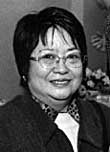 Notoji Masako, a Professor at the Graduate School of Arts and Sciences, University of Tokyo, is considered one of Japan's most active anthropologists. Professor Notoji attended graduate school in the United States (the University of California, Los Angeles), taught at Musashi University in the 1980s and early 1990s, and has been affiliated with the University of Tokyo since 1992. In 1994, she was the Toyota Visiting Professor at the Center for Japanese Studies, University of Michigan.
Notoji Masako, a Professor at the Graduate School of Arts and Sciences, University of Tokyo, is considered one of Japan's most active anthropologists. Professor Notoji attended graduate school in the United States (the University of California, Los Angeles), taught at Musashi University in the 1980s and early 1990s, and has been affiliated with the University of Tokyo since 1992. In 1994, she was the Toyota Visiting Professor at the Center for Japanese Studies, University of Michigan.
Professor Notoji's research interests focus on U.S. Popular Culture, Comparative Ethnic Relations, and U.S.-Japan Cultural Relations. Several of her major publications include Dizunirando to iu seichi (Disneyland as America's Sacred Land, Tokyo, Iwanami Shoten, 1990); "Some Aspects of the Cultural Identity Crisis of Modern Japanese Intellectuals: The Case of Junichiro Tanizaki," Journal of Asian Culture (UCLA) vol. 5, 1981; "Directions of the U.S. Multiculturalism," in Why Ethnicity Now? (University of Tokyo Press, 1994, in Japanese); and "Ethno-politics in Historical Exhibits in the U.S.," in Multiculturalism in America (University of Tokyo Press, 1999, in Japanese).
During her two-month stay (March to May 2001) as a Visiting Fellow of the Donald Keene Center, Professor Notoji presented various lectures and workshops at Columbia University (at the Donald Keene Center, the American Studies Program, the East Asian Institute, the Department of Anthropology, the Center for the Study of Ethnicity and Race, the History Student Benkyokai, and Teachers College), Brown University, the University of Washington, and Rutgers University. Lecture titles included: Anthropology and History in Japan; Teaching American Studies in Japan; Popular Uses of History in Japanese Life; Dazzlement, Consumption, and the Hyperreal: American Theme Parks in Japan; Diversity in Japan; The Role of Sports in U.S.-Japan Cultural Relations; and New Directions in American Studies in Japan. Professor Notoji also spent a significant amount of time meeting with students from area universities, discussing her varied academic, professional and cultural interests with students of Anthropology, History, International Studies, American Studies, Literature, Language and Religion.
Fall 2000
BAN Shigeru (Architect)
 One of Japan’s leading younger architects, Mr. Ban gained international attention for his low-cost quickly built relief structures, using durable cardboard tubing, built in Kobe immediately following the earthquake of January 1995. He has since constructed similar buildings for victims of earthquakes and other natural disasters in Turkey and Rwanda.
One of Japan’s leading younger architects, Mr. Ban gained international attention for his low-cost quickly built relief structures, using durable cardboard tubing, built in Kobe immediately following the earthquake of January 1995. He has since constructed similar buildings for victims of earthquakes and other natural disasters in Turkey and Rwanda.
Born in 1957, Mr. Ban received his architecture degree from The Cooper Union (NY), following study at the Southern California Institute of Architecture. He worked in the architecture firm of Arata Isozaki (1982-83). In 1995, Mr. Ban established an NGO called Voluntary Architects Network (VAN) and soon afterward was made special consultant of the UN High Commission of Refugees (UNHCR). He is also active as a designer of private homes, apartment houses and public-housing developments, galleries, museums, railway stations for JR, and furniture and industrial designs.
Mr. Ban’s awards include: SD Architect of the Year (1985); Tokyo Society of Architects House Award (1993); Mainichi Design Prize (1995); Tokyo Journal Innovative Arts Award (1996); Shinkenchiku Magazine Yoshioka Award (1996); Intl. Architects Academy Ecopolis Award (1996); Japan Institute of Architects Best Young Architect of the Year Award (1997); JIA Tohoku Award (1998).
Mr. Ban presented a lecture entitled "Beyond Paper and Curtain: Architectural Works and Humanitarian Activities of Shigeru Ban" at Columbia University on April 24, 2000, which was co-sponsored by the Donald Keene Center and the Graduate School of Architecture, Planning & Preservation. Two days after his lecture at Columbia a large environmental structure of Ban's opened in the garden of the Museum of Modern Art in New York, and remained as a temporary installation in the MoMA until August. In June, Mr. Ban's design for the Japanese Pavilion opened at Expo 2000 in Hanover, Germany, and was acclaimed as the most successful Pavilion at the 2000 World's Fair.
Mr. Ban returned to Columbia in the fall semester of 2000 to teach an Architecture Studio course at Columbia. As part of this course, Mr. Ban graciously offered to have students accompany him to Turkey, where he was instrumental in constructing temporary shelters for the thousands of people who were left homeless after a massive earthquake struck in 1999. He completed his Visiting Fellow activities in February 2001, when he presented various public lectures at the New Jersey Institute of Technology, The Cooper Union, Massachusetts Institute of Technology, Japan Society (New York), and the Graham Foundation/Architecture and Design Society of the Art Institute of Chicago.
IMAI Masaharu (Historian)
 Professor Imai is considered one of Japan's most prominent scholars of medieval Japanese Buddhism. He received his Ph.D. in History from Tokyo University of Education (Tokyo Kyoiku Daigaku, now University of Tsukuba) in 1977, held Visiting Professor positions at Beijing University (1992), Princeton University (1993), and Lijublijanna University in Slovenia (1997), and taught as an Assistant Professor and Professor in the Department of Human Science at Ibaraki University from 1977-1996. He was recently named Dean of the College of Japanese Language and Culture at the University of Tsukuba, where he has been a Professor at the Institute of History and Anthropology and Director of the Program on Japanese History since 1996.
Professor Imai is considered one of Japan's most prominent scholars of medieval Japanese Buddhism. He received his Ph.D. in History from Tokyo University of Education (Tokyo Kyoiku Daigaku, now University of Tsukuba) in 1977, held Visiting Professor positions at Beijing University (1992), Princeton University (1993), and Lijublijanna University in Slovenia (1997), and taught as an Assistant Professor and Professor in the Department of Human Science at Ibaraki University from 1977-1996. He was recently named Dean of the College of Japanese Language and Culture at the University of Tsukuba, where he has been a Professor at the Institute of History and Anthropology and Director of the Program on Japanese History since 1996.
Professor Imai has published, edited, and presented a vast number of volumes, articles and lectures on a great range of topics related to Japanese studies. Some of his more recent books include Amerika ni watatta bukkyo bijutsu (Japanese Buddhist Art Objects Preserved in the United States, 1999), Sutehijiri Ippen (Ippen the Recluse-Mendicant, 1999), Shinran to sono kazoku (Shinran and His Family,1998), Ibaraki no Zenshu (The Zen Schools of Ibaraki,1997), and Chusei o ikita Nihonjin (Outstanding Figures of Medieval Japan,1992).
Professor Imai was a Visiting Fellow of the Donald Keene Center and a Visiting Professor in the Department of East Asian Languages and Cultures from September to November 2000. His activities included workshops and seminars with Columbia graduate students in Japanese religion, history and literature, and public lectures at Columbia University, the University of Michigan, the University of California, Santa Barbara, the University of California, Berkeley, Harvard University, the University of Illinois, Princeton University, Yale University, and Honganji (New York Buddhist Church).
On November 3, 2000, Professor Imai led a symposium at Columbia entitled New Perspectives on Studying Medieval Japan that was co-sponsored by the Donald Keene Center and the Institute for Medieval Japanese Studies at Columbia. The symposium involved twenty-two leading scholars from surrounding universities, museums, and institutions, and focused on four topics: Defining "Medieval Japan": New Perspectives; Buddhism, Shinto, and Women's History; History and Art: Dealing with Textual and Nontextual Primary Sources; and The Formation of "Nihon Kenkyu" and US-Japan Intellectual Exchange.
Upon Professor Imai's return to Japan, he wrote a book about his experiences as a Visiting Fellow entitled Japan Studies at Columbia University in New York, Fall 2000, which was published by the College of Japanese Language and Culture, University of Tsukuba, in the spring of 2001.
Spring 2000
OOKA Makoto (Poet)
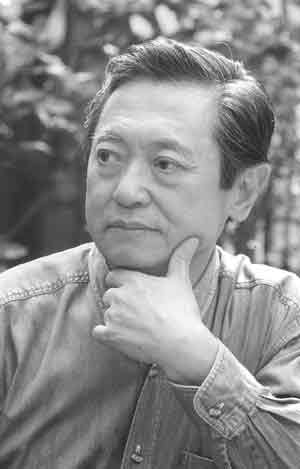 Mr. Ooka is considered one of Japan’s finest poets and literary critics. Born 1931, he is the author of the popular poetry column Ori-ori no Uta, which has run daily on the front page of Asahi Shimbun for nearly 20 years. Mr. Ooka is a former president of Japan PEN Club (1989-93), professor of Japanese literature at Meiji University (1965-87) and National University of Arts & Music (1988-93), and member of the Advisory Board of Poetry International (Rotterdam). Mr. Ooka has received numerous awards, including: Officier, Ordre des Arts et des Lettres from the French government, Yomiuri Prize for Literature, Kikuchi Kan Prize, Hanatsubaki Prize, and Golden Wreath Prize. He is the author of various collections of poetry in Japanese, French, and English as well as collections of essays on Japanese and international literature.
Mr. Ooka is considered one of Japan’s finest poets and literary critics. Born 1931, he is the author of the popular poetry column Ori-ori no Uta, which has run daily on the front page of Asahi Shimbun for nearly 20 years. Mr. Ooka is a former president of Japan PEN Club (1989-93), professor of Japanese literature at Meiji University (1965-87) and National University of Arts & Music (1988-93), and member of the Advisory Board of Poetry International (Rotterdam). Mr. Ooka has received numerous awards, including: Officier, Ordre des Arts et des Lettres from the French government, Yomiuri Prize for Literature, Kikuchi Kan Prize, Hanatsubaki Prize, and Golden Wreath Prize. He is the author of various collections of poetry in Japanese, French, and English as well as collections of essays on Japanese and international literature.
Mr. Ooka visited New York with his wife (Fukase Saki, playwright and essayist) for one month in March, 2000. His activities included workshops and seminars with Columbia graduate students in Japanese literature (on kouta, imayo, and other forms of classical Japanese poetry), the Sen Lecture ( "Kuruma-za (Sitting in a Circle) - Thoughts on Japanese Group Mentality") at Columbia University, lectures/readings at Princeton University, Harvard University, and The Cooper Union, and at Japan Societies in New York, Boston and San Francisco.
BAN Shigeru (Architect)
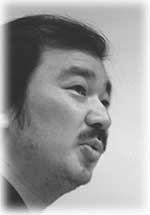 One of Japan’s leading younger architects, Mr. Ban gained international attention for his low-cost quickly built relief structures, using durable cardboard tubing, built in Kobe immediately following the earthquake of January 1995. He has since constructed similar buildings for victims of earthquakes and other natural disasters in Turkey and Rwanda.
One of Japan’s leading younger architects, Mr. Ban gained international attention for his low-cost quickly built relief structures, using durable cardboard tubing, built in Kobe immediately following the earthquake of January 1995. He has since constructed similar buildings for victims of earthquakes and other natural disasters in Turkey and Rwanda.
Born in 1957, Mr. Ban received his architecture degree from The Cooper Union (NY), following study at the Southern California Institute of Architecture. He worked in the architecture firm of Arata Isozaki (1982-83). In 1995, Mr. Ban established an NGO called Voluntary Architects Network (VAN) and soon afterward was made special consultant of the UN High Commission of Refugees (UNHCR). He is also active as a designer of private homes, apartment houses and public-housing developments, galleries, museums, railway stations for JR, and furniture and industrial designs.
Mr. Ban’s awards include: SD Architect of the Year (1985); Tokyo Society of Architects House Award (1993); Mainichi Design Prize (1995); Tokyo Journal Innovative Arts Award (1996); Shinkenchiku Magazine Yoshioka Award (1996); Intl. Architects Academy Ecopolis Award (1996); Japan Institute of Architects Best Young Architect of the Year Award (1997); JIA Tohoku Award (1998).
Mr. Ban presented a lecture entitled "Beyond Paper and Curtain: Architectural Works and Humanitarian Activities of Shigeru Ban" at Columbia University on April 24, 2000, which was co-sponsored by the Donald Keene Center and the Graduate School of Architecture, Planning & Preservation. Two days after his lecture at Columbia a large environmental structure of Ban's opened in the garden of the Museum of Modern Art in New York, and remained as a tem porary installation in the MoMA until August. In June, Mr. Ban's design for the Japanese Pavilion opened at Expo 2000 in Hanover, Germany, and was acclaimed as the most successful Pavilion at the 2000 World's Fair.
Mr. Ban returned to Columbia in the fall semester of 2000 to teach an Architecture Studio course at Columbia. As part of this course, Mr. Ban graciously offered to have students accompany him to Turkey, where he was instrumental in constructing temporary shelters for the thousands of people who were left homeless after a massive earthquake struck in 1999. He completed his Visiting Fellow activities in February 2001, when he presented various public lectures at the New Jersey Institute of Technology, The Cooper Union, Massachusetts Institute of Technology, Japan Society (New York), and the Graham Foundation/Architecture and Design Society of the Art Institute of Chicago.